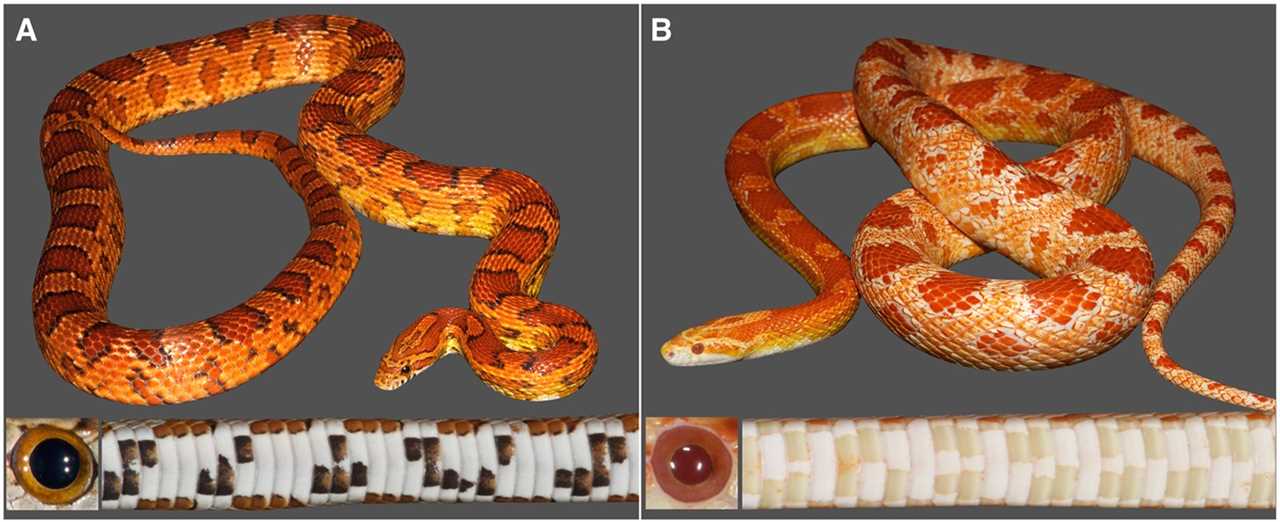
Getting Started with an Amel Corn Snake
- Setting up the enclosure: Your Amel Corn Snake will need a spacious and secure enclosure to live in. The enclosure should be large enough to allow the snake to move around and have different areas for hiding and climbing. Line the bottom of the enclosure with a suitable substrate, such as aspen bedding or reptile carpet.
- Feeding your Amel Corn Snake: Amel Corn Snakes are carnivorous and primarily eat mice or small rats. The size of the prey should be appropriate for the size of the snake. Feed your snake once every 5-7 days, adjusting the frequency based on its age and size. Always provide clean, fresh water in a shallow dish for your snake to drink from.
By following these guidelines, you can ensure that your Amel Corn Snake will thrive in its new environment. Remember to monitor its health and behavior regularly, and provide a safe and comfortable habitat for its overall well-being. Happy breeding!
Choosing the Right Enclosure for Your Amel Corn Snake
Size
Type of Enclosure
Security
Substrate
The choice of substrate for your Amel corn snake’s enclosure is essential for maintaining hygiene. Some commonly used substrates include aspen shavings, cypress mulch, reptile carpet, and paper towels. Avoid using substrates that can cause impaction, such as pine or cedar shavings. The substrate should be spot-cleaned regularly and completely changed as needed to keep the enclosure clean.
Heating and Lighting
Amel corn snakes require a temperature gradient in their enclosure to regulate their body temperature. Provide a basking spot with a temperature of around 85-90°F (29-32°C) at one end of the enclosure, and a cooler area around 70-75°F (21-24°C) at the other end. Make sure to use a reptile-specific heating pad or heat lamp to achieve this temperature range. UVB lighting is not required for corn snakes, but providing a low-level light source can help establish a day-night cycle.
Décor and Hides
Offer a variety of hiding spots and climbing opportunities for your Amel corn snake. Provide at least one hide on each end of the enclosure to create a sense of security for your snake. You can use commercially available reptile hides or create your own using natural materials like rocks, logs, or plastic plants. Adding some climbing branches and a substrate that allows burrowing, like aspen shavings, will also ensure that your snake has a stimulating and enriched environment.
| Pros | Cons |
|---|---|
| Glass aquariums | Excellent visibility, easily customizable |
| Plastic tubs | Affordable, good heat retention |
| Wooden vivariums | Natural look, can mimic natural habitat |
Temperature and Humidity Requirements for Amel Corn Snakes
The optimal temperature range for an Amel Corn Snake is between 75-85°F (24-29°C). This can be achieved by setting up a gradient within their enclosure, with one side being slightly warmer than the other. You can use a heat mat or heat lamp to create this temperature gradient.
It is also important to provide a hiding spot on both the warm and cool side of the enclosure. This allows your snake to choose the environment that best suits their needs at any given time.
In addition to temperature, humidity is another important factor to consider. The humidity level for an Amel Corn Snake should be maintained at around 40-50%. This can be achieved by providing a water dish for your snake to bathe in and by occasionally misting the enclosure to increase humidity.
Proper ventilation is also crucial to prevent excessive humidity levels, which can lead to respiratory issues for your snake. Make sure your enclosure has adequate airflow to maintain a healthy humidity level.
Monitoring the temperature and humidity levels within your Amel Corn Snake’s enclosure is essential. You can use a digital thermometer and hygrometer to accurately measure these factors and make any necessary adjustments.
Remember, providing the appropriate temperature and humidity levels for your Amel Corn Snake is essential for their overall health and well-being. By maintaining these conditions, you can ensure a happy and thriving pet reptile.
Providing the Proper Lighting for Your Amel Corn Snake
One important aspect to consider when choosing lighting for your amel corn snake is the color temperature of the bulbs. It is recommended to use bulbs with a color temperature between 5000-6500 Kelvin, which closely resembles natural daylight. This helps to create a comfortable and visually appealing environment for your snake.
Creating a Comfortable Habitat for Your Amel Corn Snake
Creating a comfortable habitat for your Amel corn snake is essential for its overall well-being and health. These beautiful reptiles require specific environmental conditions to thrive and feel secure. By providing the right setup, you can ensure that your pet snake feels safe and comfortable in its enclosure.
One of the first things to consider is the size of the enclosure. Corn snakes are active reptiles, and they require enough space to move and explore. A tank or terrarium that is at least 20 gallons is recommended for adult Amel corn snakes. Make sure to provide a secure lid or top to prevent escape.
Temperature and humidity levels are crucial for Amel corn snakes. Snakes are ectothermic, which means they rely on their environment to regulate their body temperature. Provide a temperature gradient in the enclosure, with one side being warmer (around 85°F) and the other side cooler (around 75°F). This allows the snake to thermoregulate by moving between the areas as needed. A reptile-specific heating pad or overhead heat lamp can be used to maintain the desired temperatures.
Humidity levels should be kept between 40% and 60% for Amel corn snakes. Providing a humidity hide, such as a moistened cave or box with a small entrance, can help the snake shed its skin properly. Regular misting of the enclosure, or using a reptile fogger, can also help maintain the desired humidity levels.
Lastly, make sure to clean the enclosure regularly to maintain a healthy environment for your snake. Remove any waste, uneaten food, and shed skin promptly. Disinfect the enclosure with a reptile-safe cleaner on a regular basis to prevent the buildup of bacteria or parasites.
By creating a comfortable habitat for your Amel corn snake, you are setting the stage for a happy and healthy pet. Remember to monitor the temperature and humidity levels regularly and make adjustments as needed. With proper care, your Amel corn snake will thrive and become a beautiful addition to your reptile family.
Handling and Taming Your Amel Corn Snake
Handling and taming your amel corn snake is an essential part of owning this beautiful and fascinating reptile. While they may seem intimidating with their vibrant color and unique scale patterns, amel corn snakes are actually one of the most docile and easy to handle snake breeds.
Getting Started
Once your snake has had time to adjust, you can start the taming process. Make sure to handle your snake regularly, as this will help build trust and familiarize the snake with human interaction.
Proper Technique
Start by placing one hand under the snake’s body, supporting its weight. The other hand can be used to guide the snake’s movement and prevent it from slipping away. Slow and steady motions will help keep the snake calm and prevent it from feeling threatened.
Building Trust
During handling sessions, speak softly and avoid sudden movements. This will help the snake associate your presence with a sense of calmness and security. Over time, your snake will grow accustomed to your scent and handling, allowing for longer and more frequent interactions.
Benefits of Handling
Regular handling not only helps to familiarize your amel corn snake with human interaction but also provides numerous benefits for both you and your pet. Handling allows you to monitor the snake’s health by checking for any abnormalities or signs of illness. It also helps prevent the snake from becoming aggressive or defensive, which can occur if they are not regularly exposed to human contact.
Handling your amel corn snake is also a great way to create a bond with your pet and enhance your overall pet ownership experience. The more time you spend handling and interacting with your snake, the more comfortable and trusting it will become, making it an enjoyable and rewarding pet to have.
Feeding Your Amel Corn Snake: What and How Much to Feed
What to feed your Amel Corn Snake
Amel Corn Snakes are carnivores, and their diet primarily consists of small rodents such as mice and rats. It is best to offer your snake prey that is appropriately sized. For young snakes, pinky mice are suitable, while adult snakes can consume larger mice or small rats.
How much to feed your Amel Corn Snake
The size of the prey should also be appropriate for the size of your snake. Generally, the prey should be no wider than the widest part of your snake’s body. Feeding your snake prey that is too large can result in regurgitation or other digestive problems.
Feeding method
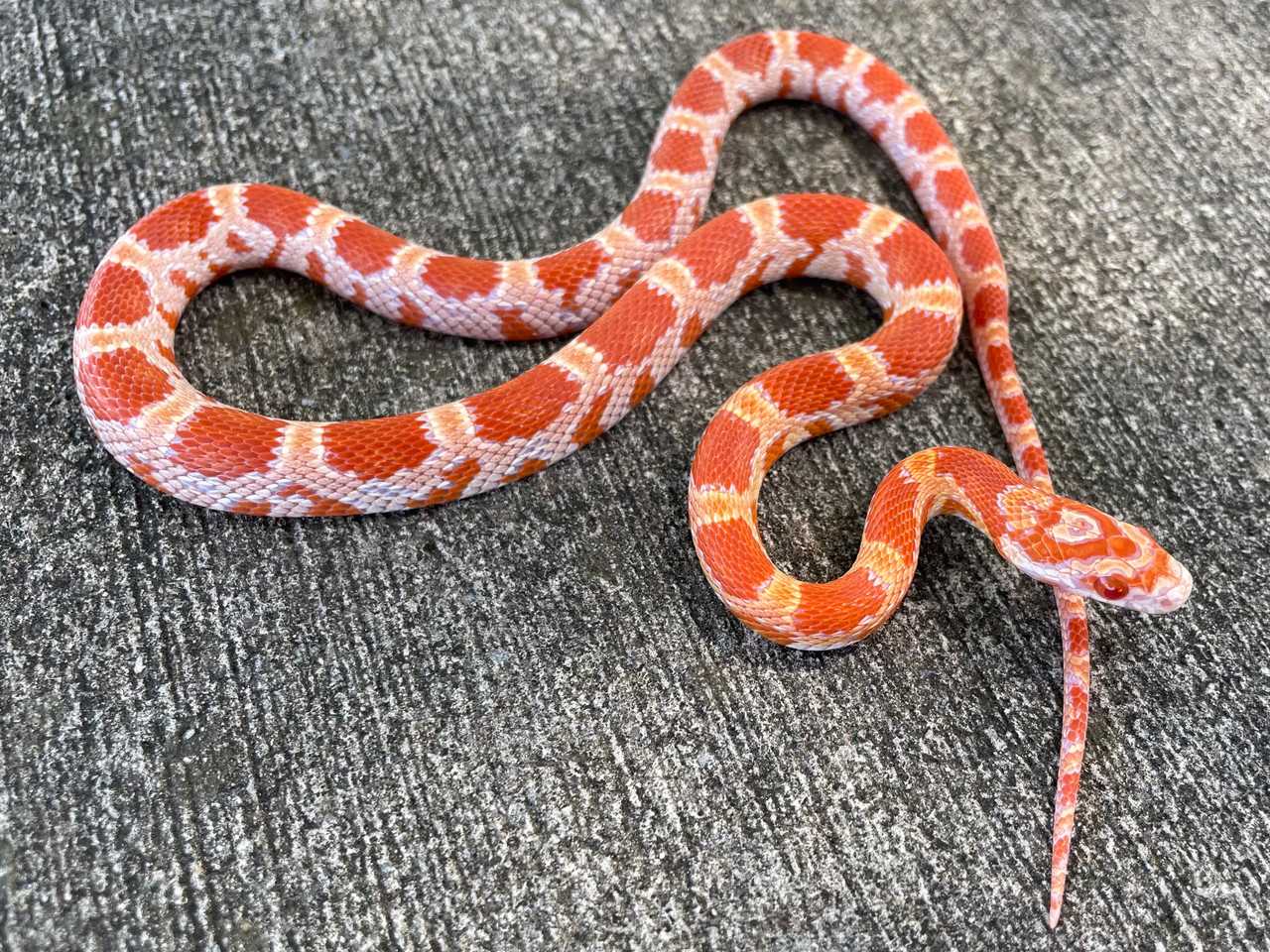
When feeding your Amel Corn Snake, it is best to use a pair of feeding tongs or tweezers to offer the prey. This prevents your snake from associating your hand with food and helps avoid accidental bites. Place the prey near the snake’s head and allow it to strike and constrict its meal.
Choosing the Right Substrate for Your Amel Corn Snake
One important consideration is the color of the substrate. It is recommended to choose a substrate that is a contrasting color to your snake’s scales. This will make it easier for you to spot any unusual shedding or signs of illness. A light-colored substrate, such as aspen shavings or paper towels, works well for this purpose.
The temperature requirements of your Amel Corn Snake are also important to consider when choosing a substrate. Some substrates, like reptile carpet or paper towels, are better at maintaining consistent temperatures throughout the enclosure. Others, such as loose bedding or mulch, may provide insulation and allow your snake to burrow and regulate its own body temperature.
Another factor to consider is the ease of cleaning and maintaining the substrate. Snakes, including Amel Corn Snakes, often defecate and urinate in their enclosures. It is essential to choose a substrate that can be easily spot cleaned or changed completely. Substrates like newspaper, paper towels, or reptile carpet are all relatively easy to clean and replace.
Choosing the Right Substrate for Your Amel Corn Snake
There are several factors to consider when selecting a substrate for your Amel Corn Snake. First and foremost, it should be safe for your snake to burrow and move around on. Avoid using substrates that may cause harm, such as sharp materials or rough textures.
Another important consideration is maintaining the proper temperature and humidity levels. The substrate you choose should help regulate these factors and provide insulation for your snake. As Amel Corn Snakes are native to humid environments, selecting a substrate that retains moisture is essential.
Paper towels or reptile carpet can also be used as substrates for Amel Corn Snakes. These options are easy to clean and provide a hygienic environment for your pet. They do not retain moisture as well as aspen bedding, so additional measures may need to be taken to maintain the proper humidity levels in the enclosure.
Regular Health Checks for Your Amel Corn Snake
Regular health checks are essential for ensuring the well-being and longevity of your Amel Corn Snake. As a responsible pet owner, it is your duty to monitor their health and detect any signs of illness or discomfort early on.
Inspect your snake’s scales regularly for any abnormalities. Common signs of skin issues include discoloration, blisters, roughness, or excessive shedding. If you notice any unusual changes, consult a reptile veterinarian to address the issue promptly. Remember to provide a suitable substrate that allows your snake to shed its skin properly.
Observing your snake’s behavior is also crucial. Take note of any changes in activity levels, such as decreased movement or excessive hiding. Healthy Amel Corn Snakes are generally active and curious. If your snake appears lethargic or displays abnormal behaviors, it may be indicative of underlying health problems.
Last but not least, regular health checks should include an examination of your snake’s oral health. Periodically check for any signs of mouth rot, such as swollen gums, drooling, or bad breath. Healthy snakes have clear eyes, and there should be no discharge or cloudiness present.
Breeding Amel Corn Snakes: Tips and Considerations
Before breeding, it is essential to ensure that both the male and female snakes are healthy and in the right condition for breeding. This includes providing them with a nutritious diet and regular veterinary check-ups. It is also important to make sure that the snakes have reached sexual maturity, which is usually around 2-3 years of age.
Incubating and Hatching Amel Corn Snake Eggs
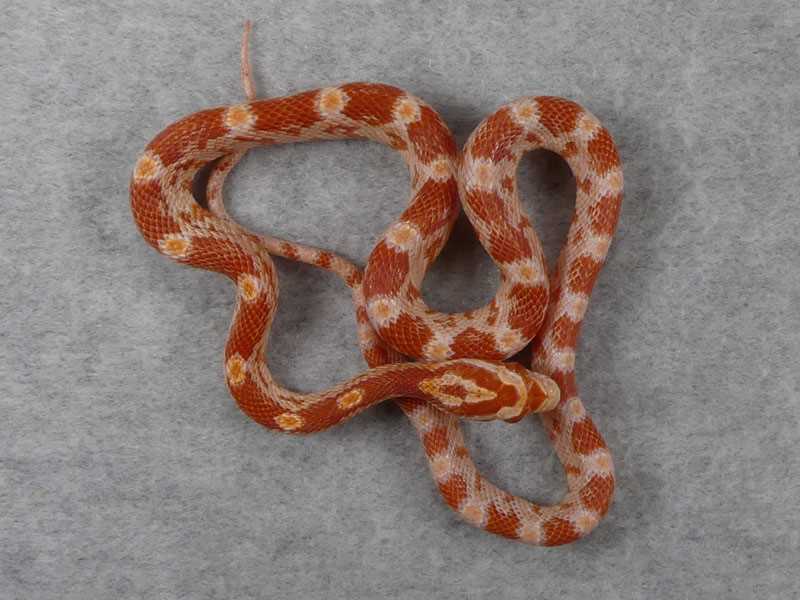
Incubating and hatching Amel corn snake eggs is an exciting and rewarding experience for reptile enthusiasts. By following a few simple steps, you can successfully breed and hatch these beautiful creatures.
Once you have selected the healthy eggs, you will need to create an artificial incubation environment. The temperature and humidity levels are crucial during this time. You will need an incubator that provides consistent heat and humidity control.
Humidity is another critical factor in the incubation process. The humidity level should be kept at around 70 to 80 percent. This can be achieved by placing a water-filled container in the incubator or using a humidity tray. Regular monitoring of the humidity level is important to ensure it does not drop too low or become too high, as this can affect the eggs’ viability.
After preparing the incubator and ensuring suitable temperature and humidity levels, carefully place the eggs into a suitable substrate, such as vermiculite or perlite. The substrate should be lightly moistened but not wet. The eggs should be buried about halfway in the substrate, with the rounded end facing up. This position helps prevent the embryos from sticking to the shell and allows for ample airflow.
Once the eggs begin to hatch, it is crucial not to disturb the hatchlings. They will emerge from the eggs on their own and should be left undisturbed until they have shed their skin and are strong enough to feed. This usually takes around 24 to 48 hours after hatching.
When the hatchlings are ready to feed, provide them with appropriately sized pinky mice or other suitable prey. It is essential to monitor their feeding habits and ensure they are eating regularly. If any issues arise, such as refusal to eat or difficulty shedding, consult with a reptile veterinarian for guidance.
Overall, incubating and hatching Amel corn snake eggs can be a fascinating and rewarding experience. By providing the proper temperature and humidity conditions and closely monitoring the progress, you can successfully breed and care for these beautiful reptiles.
Caring for Amel Corn Snake Hatchlings
Temperature
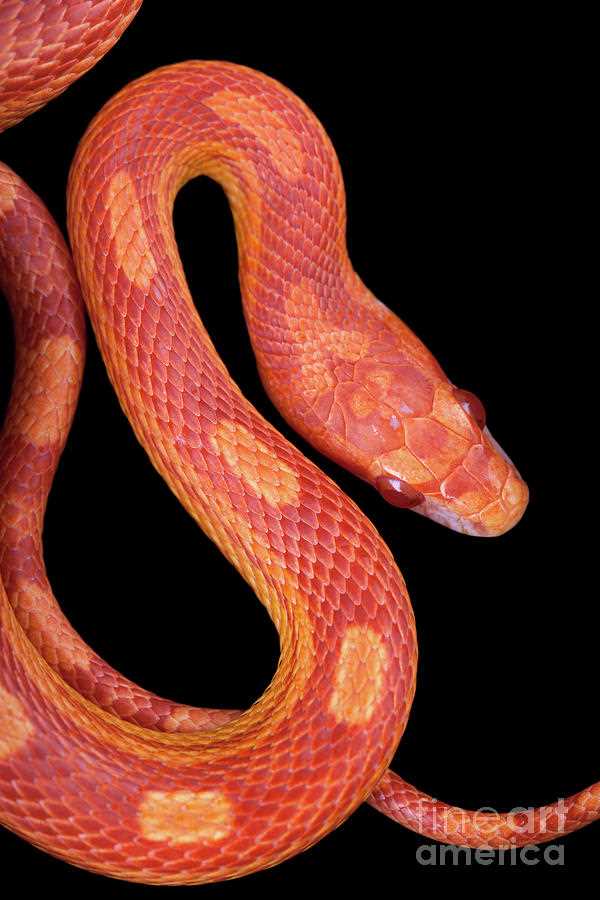
Maintaining the right temperature is essential for Amel Corn Snake hatchlings. The temperature in their enclosure should be between 75-85°F (24-29°C) on the warm side and around 70-75°F (21-24°C) on the cooler side. It’s best to provide a temperature gradient to allow the hatchling to regulate its body temperature as needed. This can be achieved using a heat mat or heat lamp.
Humidity
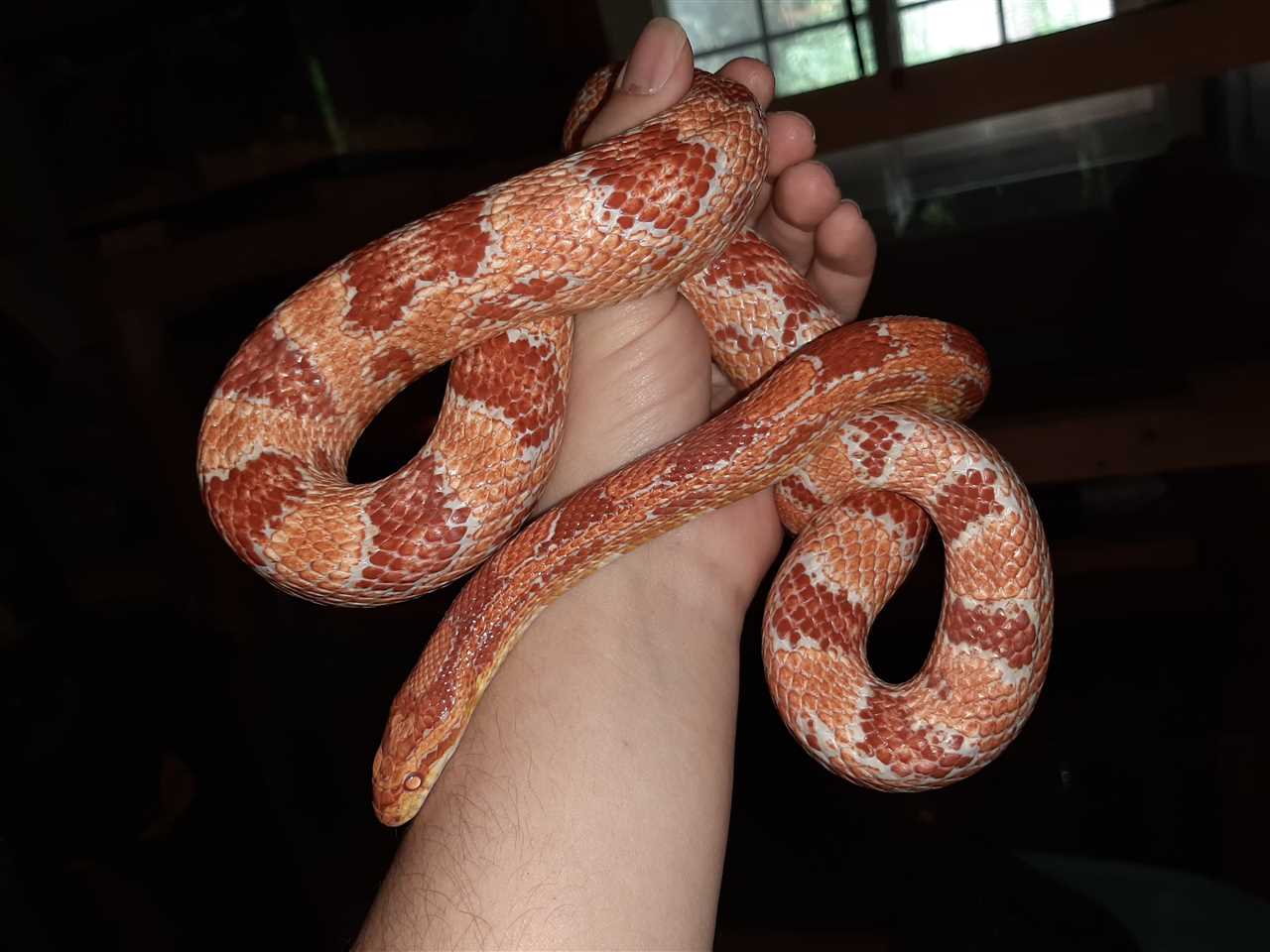
Amel Corn Snake hatchlings require a moderate level of humidity in their enclosure. The humidity level should be maintained between 40-50%. This can be achieved by misting the enclosure with water or using a reptile humidifier.
Proper humidity is essential for shedding, as it aids in the process of removing old skin. Insufficient humidity can lead to incomplete sheds, which can cause discomfort and potential health issues for the hatchling.
Enclosure Setup
Feeding
When feeding, it’s recommended to use feeding tongs to avoid accidental bites. After feeding, give the hatchling some time to digest its food without handling it to prevent regurgitation.
Note: It’s crucial to research and consult with a reptile veterinarian to ensure proper care for Amel Corn Snake hatchlings. Regular health checks and proper husbandry practices are essential for their well-being. Remember to always wash your hands before and after handling your pet Amel Corn Snake to prevent the transfer of any bacteria.
Selling and Rehoming Amel Corn Snakes
Once your Amel Corn Snake has reached maturity, you may consider selling or rehoming them. This can be a great opportunity for breeders or snake enthusiasts to acquire a new snake for their collection.
When selling or rehoming your Amel Corn Snake, there are a few important factors to consider. Firstly, you should ensure that the snake is in good health and free from any potential diseases or parasites. A thorough health check by a reptile veterinarian is recommended before selling or rehoming.
When setting a price for your Amel Corn Snake, you should consider factors such as its age, size, breeding potential, and any unique characteristics it may have. Researching the current market prices for similar snakes can help you determine a fair and competitive price.
When meeting with potential buyers or adopters, take the time to answer any questions they may have and provide them with information on how to properly care for the snake. It is essential to educate them about the snake’s diet, habitat requirements, and any specific behaviors or habits they should be aware of.
Before finalizing the sale or adoption, it is recommended to have a written agreement in place that outlines any conditions or requirements for the care of the snake. This can help protect both parties involved and ensure that the snake will be well taken care of in its new home.
After the sale or adoption is complete, you can provide ongoing support to the new owner by offering advice and guidance whenever needed. This can help ensure the well-being and happiness of the snake in its new environment.
Selling or rehoming an Amel Corn Snake can be a rewarding experience, knowing that you have found a suitable home for your snake and potentially contributed to the preservation of this beautiful breed. With proper care and responsible ownership, your Amel Corn Snake can bring joy and fascination to its new owner for many years to come.

I’m Lena Adams—a product of an unconventional upbringing in the African wilderness. My father, a daring explorer of African wildlife, sparked my fascination with reptiles, a passion that intertwined with the tragic loss of my mother during an expedition, leaving an indelible mark on my life. Driven to understand the creatures that captivated my parents, I embarked on my journey, sharing insights about reptiles, frogs, and lizards on my website. Through my explorations and conservation efforts, I honour my family’s legacy while seeking connections—to the creatures, nature, and the mother whose presence I yearn to understand.
